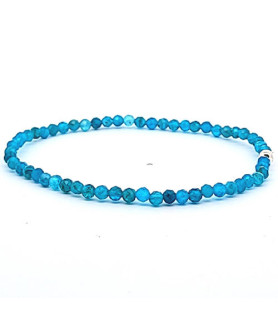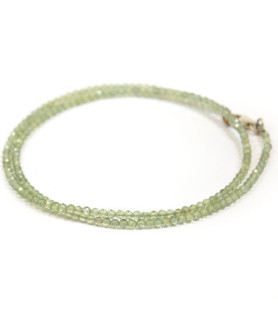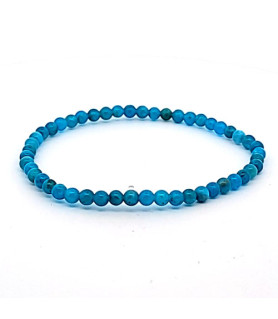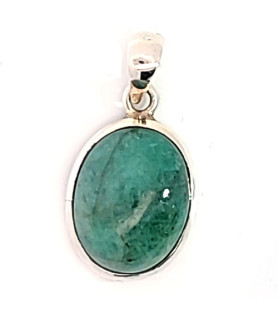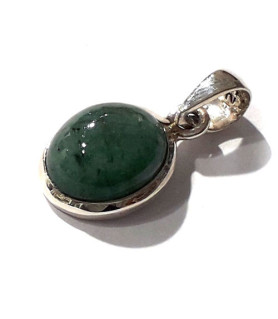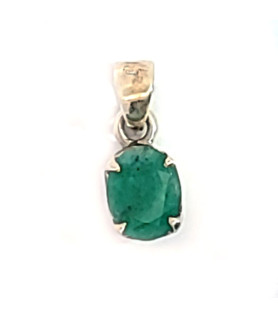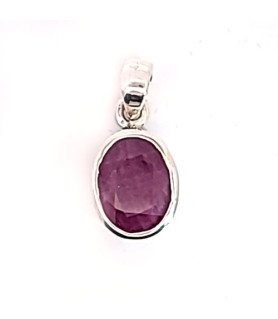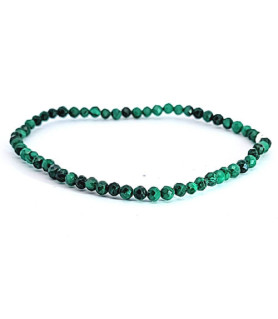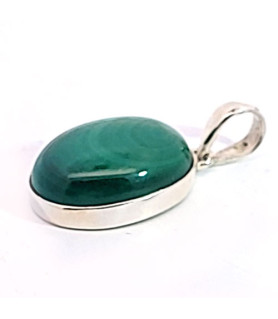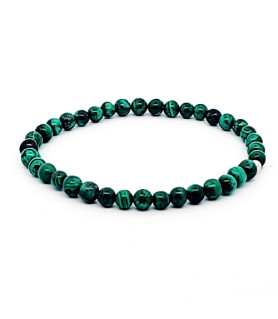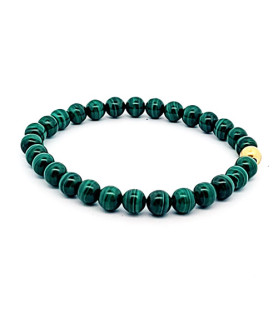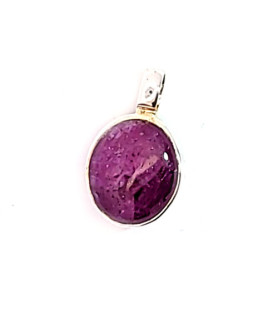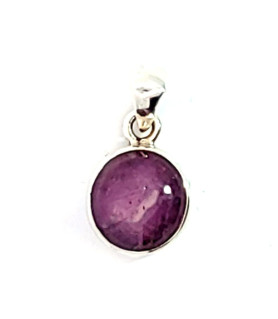
Stone Jewellery
Jewelry made of real gemstones, from amethyst to citrine, semi-precious Stones in many different colors and shapes for your individual Jewelry design.
Active filters

Produkte werden geladen...
-
Apatite Bracelet facetted 3 mm
€19.90Length approx. 18 cm. Threaded onto an elasticated band (rubber). The knot disappears elegantly into the silver ball.
Apatite, named after the Greek apatao, "to deceive", is a stone that was and still is easily confused with other minerals. The globally occurring calcium phosphate shows a wide variety of colours ranging from colourless, brown, yellow, blue and green, rarely also pink and violet. -
-
Apatite round bracelet 4 mm
€19.90Apatite, named after the Greek apatao, “to deceive”, is a stone that was and still is easily confused with other minerals. The globally occurring calcium phosphate shows a wide variety of colors from colorless, brown, yellow, blue and green, rarely also pink and purple.
-
-
Emerald Pendant
€59.00Mineralogically speaking, emerald belongs to the beryl family, which also includes aquamarine and morganite. The intense green coloration is caused by chromium. Famous sites exist in Brazil, but emeralds have also been found in Austria
-
Emerald Pendant
€29.00Mineralogically speaking, emerald belongs to the beryl family, which also includes aquamarine and morganite. The intense green coloration is caused by chromium. Famous sites exist in Brazil, but emeralds have also been found in Austria
-
Faceted emerald pendant
€49.00Mineralogically speaking, emerald belongs to the beryl family, which also includes aquamarine and morganite. The intense green coloration is caused by chromium. Famous sites exist in Brazil, but emeralds have also been found in Austria
-
Faceted emerald pendant
€49.00Mineralogically speaking, emerald belongs to the beryl family, which also includes aquamarine and morganite. The intense green coloration is caused by chromium. Famous sites exist in Brazil, but emeralds have also been found in Austria
-
Faceted emerald pendant
€69.00Mineralogically speaking, emerald belongs to the beryl family, which also includes aquamarine and morganite. The intense green coloration is caused by chromium. Famous sites exist in Brazil, but emeralds have also been found in Austria
-
Faceted emerald pendant
€69.00Mineralogically speaking, emerald belongs to the beryl family, which also includes aquamarine and morganite. The intense green coloration is caused by chromium. Famous sites exist in Brazil, but emeralds have also been found in Austria
-
Faceted ruby pendant
€59.00The name is derived from the Latin rubeus, "red", which gave rise to ruby, which in the 12th century replaced the term carbuncle, which was used for all red gemstones. The coloring element of this red representative of the corundum group is chromium.
-
Faceted ruby pendant
€69.00The name is derived from the Latin rubeus, "red", which gave rise to ruby, which in the 12th century replaced the term carbuncle, which was used for all red gemstones. The coloring element of this red representative of the corundum group is chromium.
-
Malachite Pendant
€29.90The intense green malachite is the stone for the heart and for the nerves. It also stimulates the imagination and enhances perception and concentration. Malachite stands for joy of life and harmony.
Physically, according to the literature, malachite should stimulate the brain, nerves and liver and have a detoxifying effect. -
-
Malachite bracelet facetted...
€24.90Length approx. 18 cm. Threaded onto an elasticated band (rubber). The knot disappears elegantly into the silver ball.
The name malachite comes from the Greek "malache" (for mallow), as its colour resembles the foliage of the mallow. Malachite was already known in ancient Greece, the Roman Empire, ancient China, the Egyptians and the Maya. The Egyptians used it to make sought-after artefacts such as amulets or scarabs and used it in crushed form for eye shadow. -
Malachite pendant
€29.90The intense green malachite is the stone for the heart and nerves. It also stimulates the imagination and improves perception and concentration. Malachite stands for joie de vivre and harmony.
Physically, according to literature, malachite is said to stimulate the brain, nerves and liver and have a detoxifying effect. -
Malachite Pendant
€49.00The intense green malachite is the stone for the heart and nerves. It also stimulates the imagination and improves perception and concentration. Malachite stands for joie de vivre and harmony.
Physically, according to literature, malachite is said to stimulate the brain, nerves and liver and have a detoxifying effect. -
Malachite round bracelet 5 mm
€29.90The name malachite comes from the Greek “malache” (for mallow), as its color resembles the foliage of the mallow. Malachite was already known in ancient Greece, the Roman Empire, ancient China, the Egyptians and the Maya. The Egyptians used it to make coveted art objects such as amulets or scarabs and used it in ground form for eye shadow.
-
Malachite round bracelet 6 mm
€39.90The name malachite comes from the Greek “malache” (for mallow), as its color resembles the foliage of the mallow. Malachite was already known in ancient Greece, the Roman Empire, ancient China, the Egyptians and the Maya. The Egyptians used it to make coveted art objects such as amulets or scarabs and used it in ground form for eye shadow.
-
Ruby pendant (star ruby)
€59.00The name is derived from the Latin rubeus, "red", which gave rise to ruby, which in the 12th century replaced the term carbuncle, which was used for all red gemstones. The coloring element of this red representative of the corundum group is chromium.
-
Ruby pendant (star ruby)
€49.00The name is derived from the Latin rubeus, "red", which gave rise to ruby, which in the 12th century replaced the term carbuncle, which was used for all red gemstones. The coloring element of this red representative of the corundum group is chromium.
-
Ruby pendant (star ruby)
€59.00The name is derived from the Latin rubeus, "red", which gave rise to ruby, which in the 12th century replaced the term carbuncle, which was used for all red gemstones. The coloring element of this red representative of the corundum group is chromium.
-
Ruby Pendant faceted
€49.00The name is derived from the Latin rubeus, "red", which gave rise to ruby, which in the 12th century replaced the term carbuncle, which was used for all red gemstones. The coloring element of this red representative of the corundum group is chromium.







